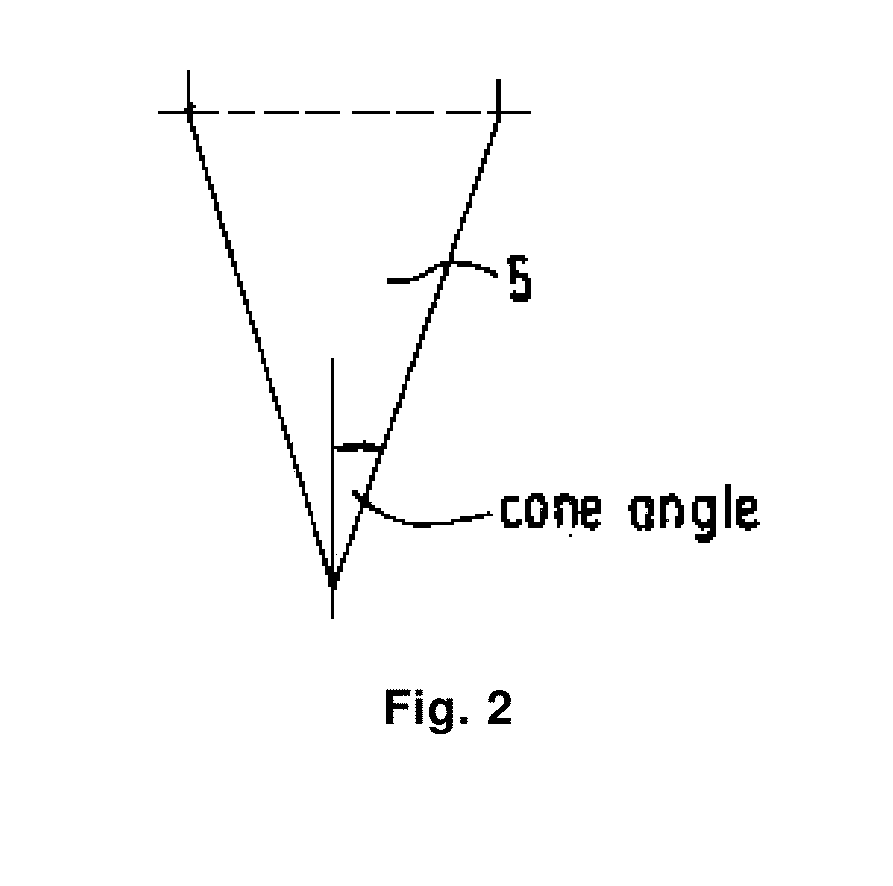Reactor assembly and method for polymerization of olefins
a technology of olefin and assembly method, which is applied in the direction of chemical/physical/physical-chemical processes, chemical apparatus and processes, chemical/physical processes, etc., can solve the problems of unfavorable material separation, increased bubble size, and material unfavorable dissolution,
- Summary
- Abstract
- Description
- Claims
- Application Information
AI Technical Summary
Benefits of technology
Problems solved by technology
Method used
Image
Examples
example 1
Comparative
[0325]The invention was exemplified with a reactor made of steel having the following dimensions:
[0326]Height of the bottom zone: 1680 mm
[0327]Diameter at the bottom of the bottom zone: 175 mm
[0328]Height of the middle zone: 2050 mm
[0329]Height of the upper zone: 670 mm
[0330]Diameter of the middle zone: 770 mm
[0331]The operation of the reactor was stable and without problems.
[0332]The reactor described above was used for copolymerization of ethylene and 1-butene at a temperature of 80° C. and a pressure of 20 bar. The height of the fluidized bed, calculated from the bottom of the middle zone was 2100 mm.
[0333]Ethylene homopolymer (MFR2=300 g / 10 min, density 974 kg / m3) produced in a loop reactor and still containing the active catalyst which one dispersed therein was introduced into the above reactor via an inlet located in the bottom zone at a rate of 40 kg / h. Ethylene, hydrogen and 1-butene were continuously introduced into the circulation gas line so that the ethylene c...
example 2
Inventive
[0335]Procedure of Example 1 was repeated. Then, the solid recycling stream withdrawn at the bottom outlet from the cyclone was returned to the fluidized bed reactor. When the reactor was operated in this way the bed level increased in one hour to 2300 mm. At the same time the solids content in the fluidization gas stream increased to 0.4% by weight and 19.2 kg / h of polymer were transported by the fluidization gas stream to the cyclone. The flow of polymer captured from the solid recycling stream at the bottom outlet of the cyclone was 18.9 kg / h and 0.3 kg / h remained in the in the overhead stream of the cyclone.
[0336]The polymer withdrawal rate from the bed was then lowered to 61 kg / h. After one hour of operation the flows were changed so that the solid recycling stream (36) was 11.5 kg / h, the stream to downstream process stages (40) was 7.5 kg / h and polymer withdrawal stream (14) from the reactor was 72 kg / h. A stable operation was achieved with no problem of fouling in th...
PUM
| Property | Measurement | Unit |
|---|---|---|
| Fraction | aaaaa | aaaaa |
| Speed | aaaaa | aaaaa |
| Velocity | aaaaa | aaaaa |
Abstract
Description
Claims
Application Information
 Login to View More
Login to View More - R&D
- Intellectual Property
- Life Sciences
- Materials
- Tech Scout
- Unparalleled Data Quality
- Higher Quality Content
- 60% Fewer Hallucinations
Browse by: Latest US Patents, China's latest patents, Technical Efficacy Thesaurus, Application Domain, Technology Topic, Popular Technical Reports.
© 2025 PatSnap. All rights reserved.Legal|Privacy policy|Modern Slavery Act Transparency Statement|Sitemap|About US| Contact US: help@patsnap.com



